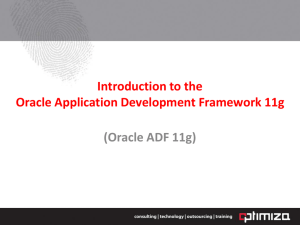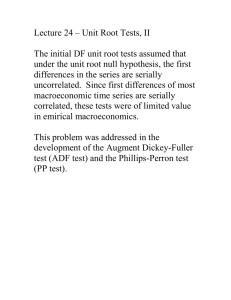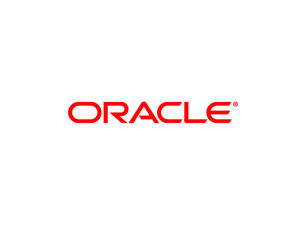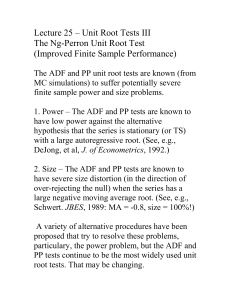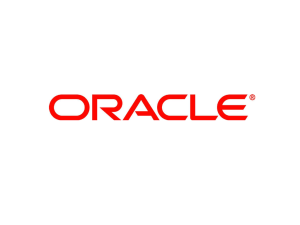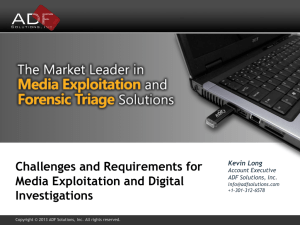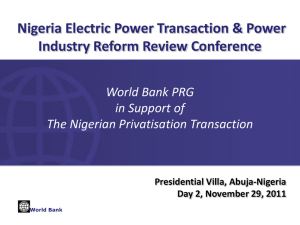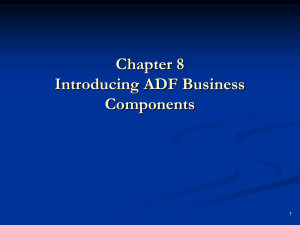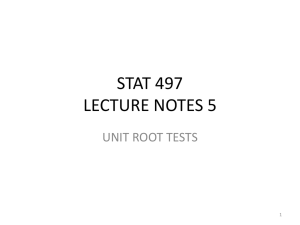What is the ADF Partial Risk Guarantee?
advertisement
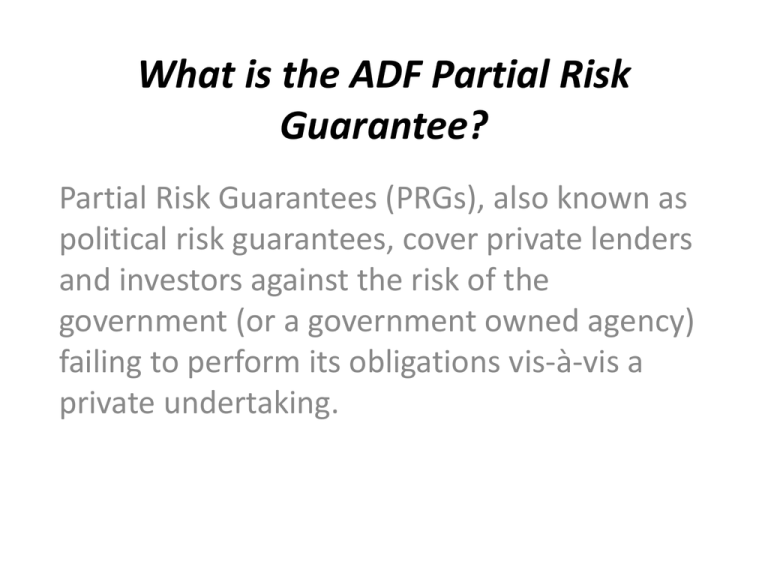
What is the ADF Partial Risk Guarantee? Partial Risk Guarantees (PRGs), also known as political risk guarantees, cover private lenders and investors against the risk of the government (or a government owned agency) failing to perform its obligations vis-à-vis a private undertaking. What are the costs and benefits for the country….? PRG instruments are designed to: Crowd in private financing Accelerate foreign direct investment Promote infrastructure development, and Encourage private sector participation in public-private partnerships. As only 25% of the face value of the guarantee is deducted from the country’s ADF allocation, ADF PRGs are effectively additional to the country’s lending program, without loan repayment obligations and no associated costs. The guarantee fees would be payable by the beneficiary. ADF PRGs will be extended on condition that the member country in whose territory the investment project is located provides counter indemnity under which it agrees to reimburse the Fund for any payments triggered by a default under its guarantee. However, they do not generate additional contingent liabilities when the government is already obligated to the private sector on the same liabilities. … and for the investors and lenders? • PRG are designed to provide comfort to investors and debt providers for risks that are beyond their control and that they might otherwise be unwilling to assume. They mitigate risks to produce more competitive loan pricing and enable the financial institutions to reduce their allocation of risk capital in accordance with the rules set out in Basel II and Basel III. This will allow projects to mobilize both foreign currency and local currency debt on better, longer or more affordable terms. If the guarantee is called, the ADF disburses with the same repayment schedule terms as the underlying project loan or public off-taker payment. • Because the government is subjected to cross-default clauses and suspension of disbursement on all projects funded through the ADF, it has a powerful incentive to abide by its contractual commitments and to undertake the policy and regulatory reforms necessary to mitigate performance risk. Fees Structure: ADF PRG fees are payable by the beneficiary and are expected to include: • A front end fee to recover development costs set within a range of 0.5-1% of the maximum possible exposure of the Fund under the guarantee payable before or at guarantee signature; • A standby fee equal to the contractual commitment fee charged on the unused portion of the guarantee and set at 0.5%; • A guarantee fee similar to the service charge applicable to ADF loans, currently 75bps, is payable either according to a schedule approved by the Fund or as a one-time up-front payment. What does a PRG cover? • The PRG covers up to 100% of all due repayments in the event of a debtservice shortfall arising from government or state owned entity nonperformance under the terms of the guarantee. • PRGs can be used for any commercial debt instruments (loans, bonds) provided by any private institution, including debt provided by sponsors in the form of shareholder loans. • Beyond debt, PRGs can be structured to cover deemed-loan structures, to provide cash flow support for investors and lenders. They cover welldefined risks typically including: Political force majeure, Currency convertibility and transfer (but not exchange rate risk), Regulatory risk, and Various forms of breach of contract. In all cases, risks covered would be those that the host country government would be willing to bear under a counter indemnity agreement. Important Features: • The ADF PRG is non accelerable by the beneficiary of the guarantee. However, when the Guarantee is called, the government becomes immediately liable to reimburse the defaulted amounts. Failure to reimburse within applicable curing period would trigger cross-default provisions on all ongoing operations. The Fund would have the option, at its own discretion, to convert that disbursement into a loan. What is the maximum amount that can be covered with the ADF PRG? • Up to 100% of each country’s ADF allocation can be guaranteed (1:4 allocation: exposure leverage ratio) in any given ADF cycle. Each country can leverage its allocation with more than one PRG, but the maximum additional headroom generated by PRGs utilization would be capped at 75% of its original allocation. • To make the most of scarce ADF allocations and competing needs for concessional financing at country level, ADF PRGs are intended to be used alongside other risk mitigation and debt financing instruments to utilize only the minimum required to make a project bankable. What projects are eligible? • PRGs will only support undertakings to further economic and social development which align with the priorities of the country. • While ADF PRGs are most likely to be utilized to enhance the bankability of project finance operations to support PPPs, private greenfield and privatization projects, they can be mobilized to support any other private undertaking where sovereign risk exposure hinders bankability. • Public sector projects may be eligible only to the extent that they involve private financing. Any official development finance institution that has preferred creditor status will not benefit from ADF PRG cover, nor will any company either partially- or fully- owned by a government in whose territory the project is to be located.


